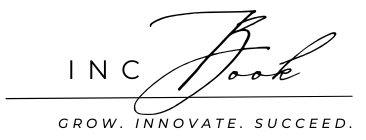Strategies for Emerging Designers Amid a Luxury Market Slowdown
- Luxury Market Challenges: Economic uncertainty and reduced discretionary spending have slowed luxury sales.
- Market Growth: The luxury goods market is still projected to grow at a CAGR of 3-5% over the next five years.
- Winning Strategies:
- Embrace customization and create one-of-a-kind pieces.
- Focus on sustainability and ethical practices.
- Leverage digital platforms for direct-to-consumer sales.
- Build community connections through partnerships and collaborations.
- Prioritize quality craftsmanship and timeless designs.
- Outlook for Designers: By innovating and adapting, emerging designers can carve a niche in a selective but growing market.
The luxury market, long a haven for high-fashion brands, is facing a slowdown that poses challenges for emerging designers. As global economic uncertainty affects consumer spending, these up-and-coming talents must navigate an increasingly competitive environment. By embracing innovative strategies and prioritizing community-driven and value-oriented approaches, emerging designers can not only survive but thrive in this shifting landscape.
The Current Landscape
Luxury spending has seen a decline in recent quarters, driven by inflation, geopolitical tensions, and changing consumer priorities. High-income shoppers are pulling back on discretionary spending, focusing on essentials and experiences over material goods. As a result, even established luxury brands are reevaluating their strategies, leaving emerging designers to compete in a crowded space with fewer consumer dollars in play.
Despite these challenges, the global luxury goods market is expected to grow at a compound annual growth rate (CAGR) of 3-5% over the next five years, according to a report by Bain & Company. Emerging designers can carve out a niche in this growing but selective market by understanding and adapting to consumer expectations.
Winning Strategies for Designers
- Embrace Personalization and Customization
Consumers increasingly value unique, one-of-a-kind pieces. Emerging designers can focus on bespoke and made-to-order services, ensuring their collections feel exclusive and tailored. - Sustainability and Ethical Practices
Sustainability is no longer optional. Designers who prioritize eco-friendly materials and ethical production processes align with consumer values and attract conscious buyers. - Leverage Digital Platforms
Direct-to-consumer (DTC) models allow emerging designers to build relationships with customers while maintaining full control of their brand. Social media and e-commerce platforms like Instagram and Shopify enable designers to showcase their collections globally without the need for a physical retail presence. - Collaborate with Communities
Partnering with local artisans, influencers, or niche markets can create authentic connections and expand brand visibility. Community-based marketing fosters loyalty and trust. - Focus on Quality Over Quantity
High-quality craftsmanship and timeless designs appeal to luxury consumers looking for investment pieces rather than fast fashion.
While the luxury market slowdown presents challenges, it also offers opportunities for emerging designers to innovate and establish themselves as key players. By adopting agile strategies, prioritizing authenticity, and leveraging technology, these designers can appeal to a selective but discerning audience.
